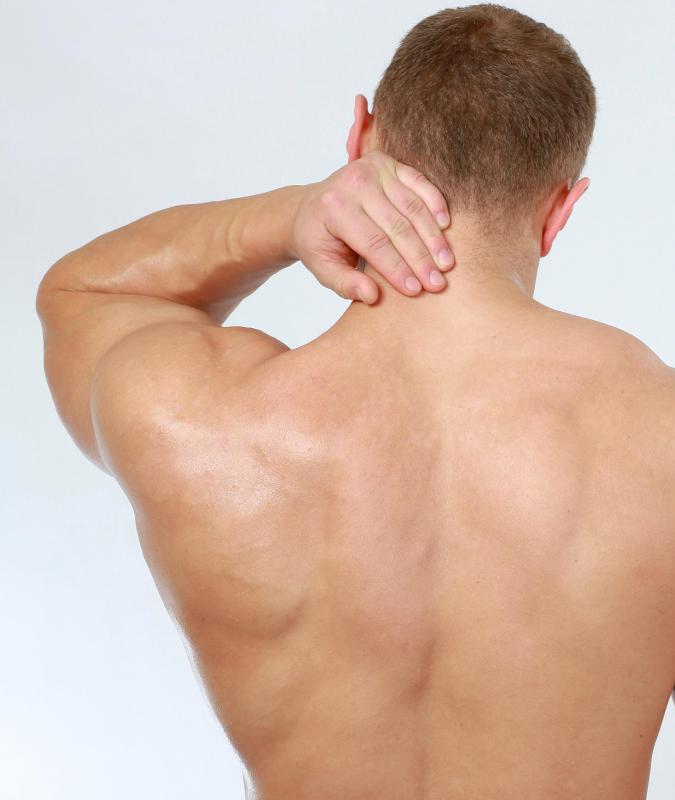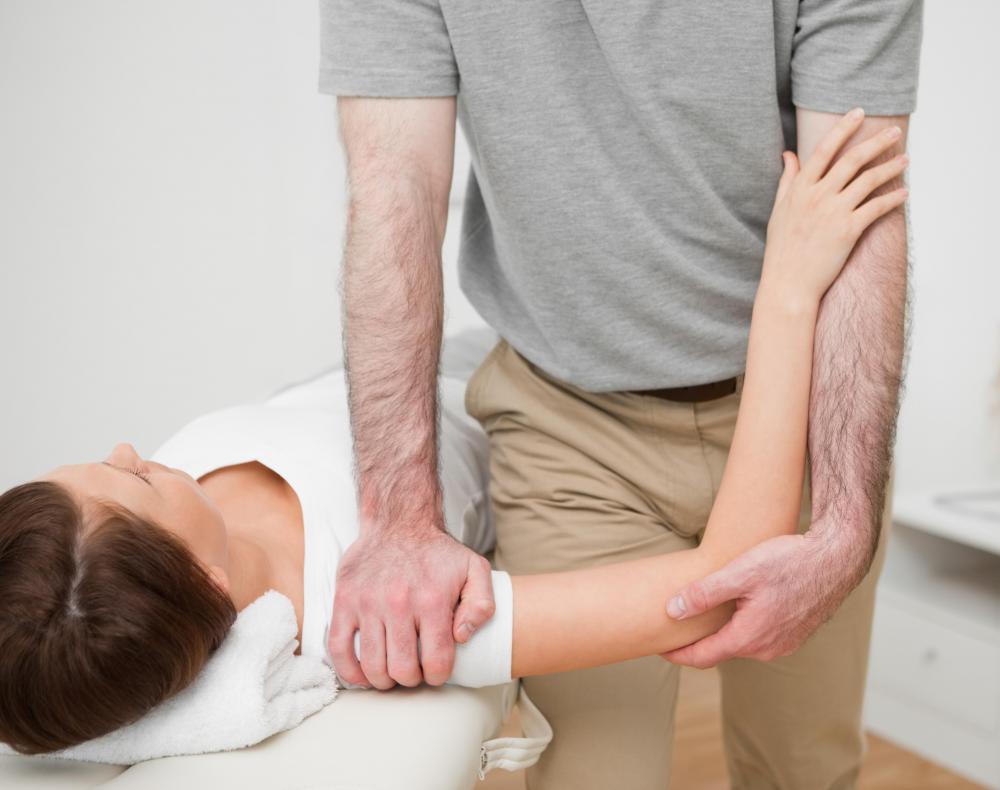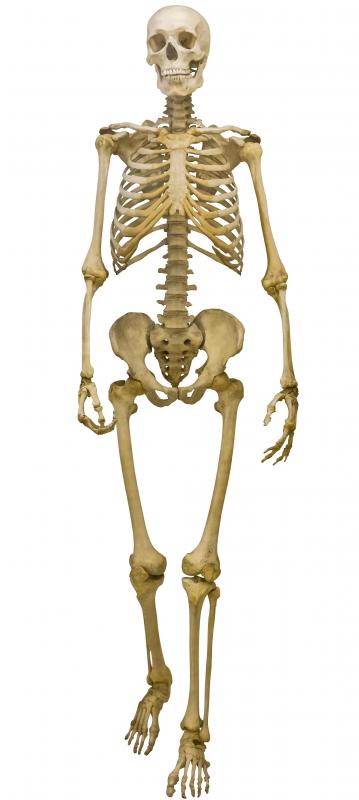At TheHealthBoard, we're committed to delivering accurate, trustworthy information. Our expert-authored content is rigorously fact-checked and sourced from credible authorities. Discover how we uphold the highest standards in providing you with reliable knowledge.
What is a Cervical Rib?
The human skeleton has 24 ribs, 12 on each side, which are attached to the vertebral column in the back. The top seven ribs, called true ribs, are connected in the front to the sternum, or breastbone; the next three ribs are attached to one another by cartilage; and the bottom two ribs, called floating ribs, are unattached in the front. In rare cases, an additional rib is found in the neck, between the bottom neck vertebra and the first rib. This additional rib is called a cervical rib. A cervical rib generally appears on one side, though occasionally a person may have one on each side.
A cervical rib is a congenital condition, which means it is present at birth, though it is often not diagnosed until adolescence or later when symptoms and complications are more likely to arise. This condition, which appears more frequently in women than in men, is usually asymptomatic, meaning that there are no physical indications that it exists. In some cases, however, problems arise because the rib places pressure against the blood vessels or muscles going through the neck into the arm. Determining whether this rib is present requires an X-ray, sonogram, magnetic resonance imaging (MRI) or other computerized tomography (CT) scans.

When symptoms do occur they often include pain in the neck and arm, tingling in the arm and hand, and weakness or muscle atrophy in the arm. This can be caused by pressure from the rib against the blood vessels and muscles going from the neck into the arm. One vessel which can be affected is the subclavian artery, the part of the main artery to the arm that passes under the clavicle, or shoulder blade. Symptoms of this complication include forearm pain, coldness in the hand and arm, numbness in the fingers, and a bluish or white tint to the arm.

Most people who have a cervical rib do not display any symptoms and remain unaware of the condition. In such situations, no treatment is required. Other patients begin to experience symptoms as they enter middle age, perhaps as a result of changes in posture and muscle tone.
If the symptoms are mild, physical therapy can help strengthen the shoulder muscles and open up the area through which the vessels and nerves travel to the arm. Posture and strengthening exercises, ultrasound, electro-stimulation therapy, heat therapy and chiropractic manipulation are frequently effective treatments. In some cases, muscle relaxants and anti-inflammatory medications are also prescribed to alleviate pain.

In cases where the symptoms are extreme or a decreased blood supply poses a risk to the arm, a procedure called a rib resection may be recommended to remove the extra rib. Surgical removal of clavicle ribs began in the early 1900’s, but this difficult procedure often resulted in nerve and vascular damage. In recent decades rib resection has become safer and more successful with the introduction of endoscopic surgical procedures that use small incisions, video, and computers.

The complications that may accompany a cervical rib are similar to those of several other conditions. If a person experiencing these symptoms discovers that he has this type of rib, he should not necessarily assume that the rib is causing his discomfort. It is important to undergo a complete physical exam to make certain that a more serious condition is not present before developing a treatment plan.
AS FEATURED ON:
AS FEATURED ON:

















Discussion Comments
I am suffering with exactly the above said symptoms for 12 years, but they have been left untreated and now I am 30's, and the problem is worse. Can a proper doctor treat me correctly in Hyderabd? Please help me.
Is a cervical rib more prevalent in certain cultures?
Post your comments